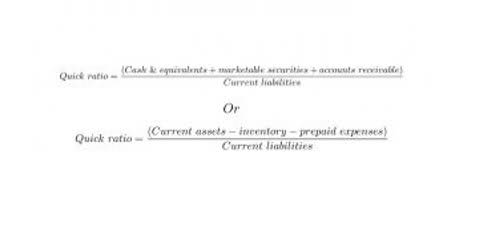
Dividends are distributions of profits to shareholders and are paid out of retained earnings, a component of stockholders’ equity. When dividends are declared, retained earnings decrease, leading to a reduction in total stockholders’ equity, reflecting the outflow of resources to shareholders. A positive equity value suggests a company has more assets than liabilities, which is a good sign for investors. On the flip side, negative equity can raise red flags, signaling financial trouble or excessive debt. The formula to calculate shareholders equity is equal to the difference between total assets and total liabilities.
Shareholder’s Equity
- If they don’t balance, there may be some problems, including incorrect or misplaced data, inventory or exchange rate errors, or miscalculations.
- By understanding these elements, investors can make informed decisions about a company’s financial health and potential for future growth.
- The company uses it to manage the working capital position, procure assets, repay debt, etc.
- So, to calculate the shareholders’ equity, you must deduct INR 8 crore from INR 10 crore.
- When you open a company’s balance sheet, you can get information about its book value of equity or shareholders’ equity.
- It is composed of several key components, including common stock, preferred stock, additional paid-in capital, retained earnings, and treasury stock.
This balance sheet compares its financial position as of September 2020 to that of the previous year. Regardless of the size of a company or industry in which it operates, there are many benefits to reading, analyzing, and understanding its balance sheet. This simple equation does a lot in statement of stockholders equity demonstrating that shareholder’s equity is the residual value of assets minus liabilities. Future trends may include changes in regulatory standards, evolving accounting practices, and increasing emphasis on sustainability and corporate governance in equity reporting.
Additional Resources

Banks, investors, venture capitalists and other stakeholders may look at the company’s share equity along with other metrics to evaluate a company’s overall financial health. A corporation may have a positive shareholder equity value or a negative one. Different capital structures affect a company’s risk profile, cost of capital, and financial flexibility. For example, a company with high debt may face higher interest expenses and financial risk, while a company with more equity may have a lower risk but potentially diluted earnings. Transparency and effective communication with investors build trust and confidence in the company. Clear and comprehensive disclosure of financial information helps investors make informed decisions and assess the company’s performance.

How do dividends affect stockholders’ equity?

It includes stocks that have been issued to company officers, public investors, company insiders and the like. To understand the shareholders equity meaning better, the following is a look at how it is calculated. The bottom line is that SE represents the remaining value of a company’s assets after subtracting all its liabilities. SE offers insight into a company’s financial position because it reflects its overall performance and indicates its long-term financial strength.
You can also consider the shareholders equity to represent a company’s residual value left to stockholders once all the company’s assets are liquidated, business creditors and company debt are fully paid. There are many shareholders’ equity ratios that you can calculate using the total shareholders equity value such as debt-to-equity ratio, return on equity or the book value of equity per share. Issuing new shares can dilute existing ownership percentages but may raise additional capital for business growth. Conversely, share repurchases can consolidate ownership but require the company to use its resources, potentially affecting liquidity. Non-controlling interest is a shareholders equity component that appears in case of consolidated financial statements.

The following examples feature the shareholders’ equity statement and show how to calculate shareholders’ equity with respect to all the above-mentioned components. Also known as additional paid-up capital, this component counts the additional amount that shareholders pay above the actual share price. Retained earnings, as the name implies, reflect the gains and losses carried forward to the next financial year. It is the amount left with or kept aside by the company after it pays the dividend from net income. Normally, the investors and firms decide to reuse this amount and reinvest the same in the company. The shareholders’ equity comprises components that play an important part in determining the Bookkeeping for Etsy Sellers company’s net worth.
- A company can use its balance sheet to craft internal decisions, although the information presented is usually not as helpful as an income statement.
- On the other hand, liabilities are the total of current liabilities (short-term liabilities) and long-term liabilities.
- In terms of payment and liquidation order, bondholders are ahead of preferred shareholders, who in turn are ahead of common shareholders.
- If it’s not directly available, you might find it in the notes of the financial statements.
- This can be an effective way to return excess cash to shareholders and signal management’s confidence in the company’s future prospects.
- A company’s financial statement consists of 3 principal components, namely – Assets, Liabilities, and Shareholders Equity.
- Rising or steady equity typically signals financial robustness and indicates that the company may be efficiently growing its assets with profit and shareholders’ investments.
The retained earnings portion reflects the percentage of net earnings that were not paid to shareholders as dividends and should not be confused with cash or other liquid assets. Positive shareholder equity means the company has enough assets to cover its liabilities. Negative shareholder equity means that the company’s liabilities exceed its assets. If a company’s shareholder equity remains negative, it is considered to be in balance sheet insolvency. The book value of equity is a key accrual accounting metric that is calculated by factoring in historical data.

Share Capital
The information required to determine shareholders’ equity is contained in a company’s balance sheet. Current assets are those that can be converted into cash in less than a year (e.g., cash, accounts receivable, inventory). Long-term assets are those that cannot be converted to cash or used in less than adjusting entries a year (e.g. investments; property, plant, and equipment; and intangibles, such as patents). Although APIC is an important element of the shareholders’ equity formula, it is not universal.
